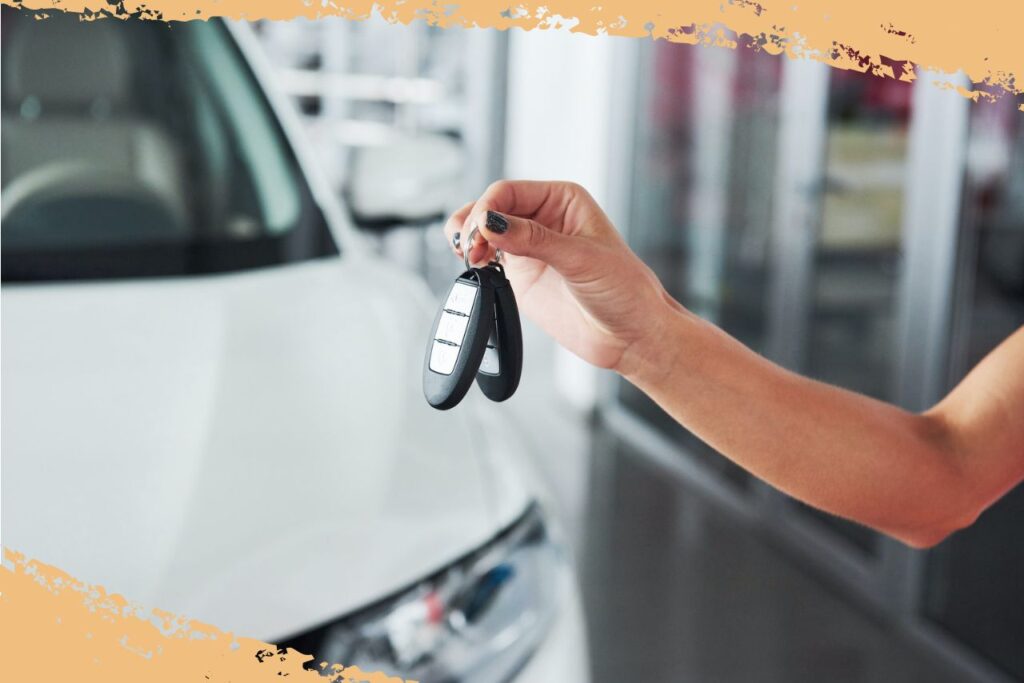As the Greek proverb so wisely intones, ‘’a wheel that turns gathers no rust’’. But if you’re new to the open road and have only recently passed your test, then those wheels won’t have been turning for long.
Accordingly, you may not yet understand the rhythms of the road and the ebbs and flows of your new vehicle, and you might be asking yourself some searching questions that can’t be heard clearly over your newly downloaded ‘drivetime’ playlist. Is that scratching sound normal when I accelerate? Does my brake pedal feel a little too spongy? Are my tyres seeming low on pressure?
Taking to the road as a new driver can be an intimidating, terrifying experience, and that’s before you start worrying that your car’s falling apart or that a breakdown is imminent. To put your mind at rest regarding the latter concern, here are 7 key maintenance checks for new drivers.
Checking Your Tyres
One of the most common car-related concerns that new drivers face comes from their tyres. Since they experience a high level of wear and tear (particularly from inexperienced drivers and the stop-start nature of their driving) tyres can be one of the first things to cause new drivers problems, mechanically speaking.
Firstly, you should be aware of the warning signs of tyres that are underinflated or damaged. If your car feels bumpy to drive, or is making an unfamiliar sound, it’s time to check your tyres. You can also visually inspect your wheels for issues; cracking on the sidewalls, abnormally worn out tread, and visible bulges and blisters are all signs that you need to investigate tyre damage further.
Then, you should make sure to regularly check your tyre pressure and make sure that they are inflated to the appropriate level.
You should also check tread depth. In the UK, the legal minimum tread depth is 1.6mm. A simple way to assess your tyres (without using a mechanic, of course) is to place a 20p piece in one of the grooves; if you can see the outside rim of the coin, you will need new tyres.
If you have alloy wheels – whether that’s for aesthetic reasons or to improve handling due to their comparative low weight – then you may find that they can be more prone to damage. This is particularly true if you are driving in poor road conditions, as alloy wheels may suffer superficial (or even foundational) damage quite simply by hitting a curb, a pothole, or even an uneven road service. Be extra vigilant.

Checking Your Brakes
Your brakes are one of the most critical safety components of your vehicle. Ensuring they are in good working order is essential for your safety and the safety of others on the road. Here are some steps to help you check your brakes:
- Listen for Unusual Noises: Pay attention to any squeaking, squealing, or grinding noises when you apply the brakes. These sounds can indicate that your brake pads are worn and need to be replaced.
- Feel for Vibrations: If you feel a vibration or pulsation in the brake pedal when you apply the brakes, it could be a sign of warped brake rotors. This issue should be addressed by a professional mechanic.
- Check Brake Fluid: Locate the brake fluid reservoir under the hood of your car. Ensure the fluid level is between the minimum and maximum marks. If the fluid is low, top it up with the correct type of brake fluid as specified in your car’s manual. Low brake fluid can indicate a leak in the brake system, which should be inspected by a professional.
- Inspect Brake Pads and Rotors: If you have the tools and knowledge, you can remove the wheels to visually inspect the brake pads and rotors. Brake pads ensure your vehicle can stop effectively, so they should have at least 3mm of friction material remaining. If they are thinner, it’s time to replace them. Rotors should be smooth and free of deep grooves or scoring
- Test Brake Performance: While driving in a safe, open area, perform a few gentle stops to test the responsiveness of your brakes. The car should stop smoothly without pulling to one side. If you notice any issues, have your brakes inspected by a professional.
- Check Brake Warning Light: If your brake warning light comes on, it’s a clear indication that there is an issue with your brake system. Do not ignore this warning; have your brakes checked by a professional as soon as possible.
Regularly checking your brakes and addressing any issues promptly can prevent more serious problems and ensure that your vehicle remains safe to drive. Remember, your brakes are vital for your safety, so never take them for granted.

Checking Your Battery
Your car’s battery is essential for starting the engine and powering electrical components, making it crucial to ensure it’s in good condition to avoid unexpected breakdowns. Regularly perform a visual inspection of the battery terminals for any signs of corrosion, which can appear as a white, ashy substance. If you notice any corrosion, clean the terminals using a mixture of baking soda and water, and a wire brush.
Additionally, use a multimeter to check the battery voltage; a fully charged battery should read around 12.6 volts or higher when the engine is off. If the reading is below 12.4 volts, it may be time to recharge or replace the battery.
Ensure that the battery is securely mounted and that the connections are tight, as loose connections can lead to starting problems and electrical issues.
Regular maintenance of your battery can help prevent inconvenient breakdowns and extend the life of your vehicle’s electrical system. By keeping an eye on your battery’s condition, you can ensure reliable performance and avoid the hassle of unexpected battery failures.
Checking Your Lights
Properly functioning lights are crucial for your safety and the safety of others on the road. Regularly checking your lights ensures that you are visible to other drivers and can see the road clearly.
- Headlights and Taillights: Turn on your headlights and taillights to ensure they are working properly. Check both high and low beams. If any bulbs are out, replace them immediately.
- Brake Lights: Have someone stand behind your car while you press the brake pedal to ensure your brake lights are functioning. This is crucial for preventing rear-end collisions.
- Indicators and Hazard Lights: Test your turn signals and hazard lights to make sure they are flashing correctly. Faulty indicators can lead to misunderstandings with other drivers and increase the risk of accidents.

Checking Your Oil
You should aim to check your oil at least once a month, as this will help you detect problems and enable you to know how much oil your car uses regularly.
When you are looking to change your oil, it should be every 3 months or at least every time you reach 3000 miles. This is because the oil can be broken up and creates a sludge build-up rapidly. This is less prominent in the modern-day vehicle but is something you should watch out for nonetheless.
To check your oil, first ensure the engine is off. Then, locate the car’s dipstick, which will be fitted in a tube attached to the side of the engine block. If you can’t find it, check your car’s manual, though you should be aware that some modern cars don’t actually have a dipstick and are instead fitted with electronic oil monitors.
Anyway, now you’ve located the dipstick, pull it out and wipe all the oil off it. You’ll notice a minimum and maximum mark once it’s clean. Next, push the dipstick back into its tube, and remove it again; if the oil falls somewhere between the minimum and maximum mark, you’re all good. Should the level be towards, or even below, the minimum mark, you should add some more oil.
The Cooling System
As well as your engine oil, you should look at your transmission fluids as well. These don’t need to be checked as often, and generally can be changed every 30,000 miles. If you have front-wheel drive, then you do not need to change the differential fluid. This is because it shares fluid with your transmission. However, if you have a four-wheel-drive or a rear-wheel drive then you should change them regularly. Though by regularly, this does only need to be once or twice a year at most.

Chips, Dents, The Windscreen & Your Vision
As a new driver, we’re sure you’ll want to look the part as you take to the road for your first few adventures. If you’ve invested in a used car, then consider Halfords, The RAC or other national provider, to ensure everything is looking shipshape. Or, should that be car shape?
More importantly, make sure there are no cracks in your windscreen and your wipers are in good working order. Even a small chip in the driver’s line of vision can seriously affect your ability to drive safely.
Replace a wiper if it is unable to give you a clear view of the road ahead and top up your washers to ensure they can sufficiently clean the windscreen.
Inside your car, if you have a phone holder attached to the windscreen it is best to remove it if it could be deemed to be interrupting your view of the road. Ditto any comedy fluffy dice hanging from the rearview mirror.
While we’re considering what you can see in front of you, it’s worth having your eyesight tested if you haven’t recently, to ensure you’re able to see all the dangers of the road in 20:20 vision. As the government’s official guidance on ‘driving eyesight rules’ says, ‘’You must be able to read (with glasses or contact lenses, if necessary) a car number plate made after 1 September 2001 from 20 metres.’’
The Bottom Line
Sadly, there is no secret potion or magic trick that can make your new car last forever. You need to put the effort in and make sure that you perform your checks as regularly as you can. These preventative measures can not only save you from being stuck with a broken down vehicle but also can save you money in the long run. And long may your car run, too!




